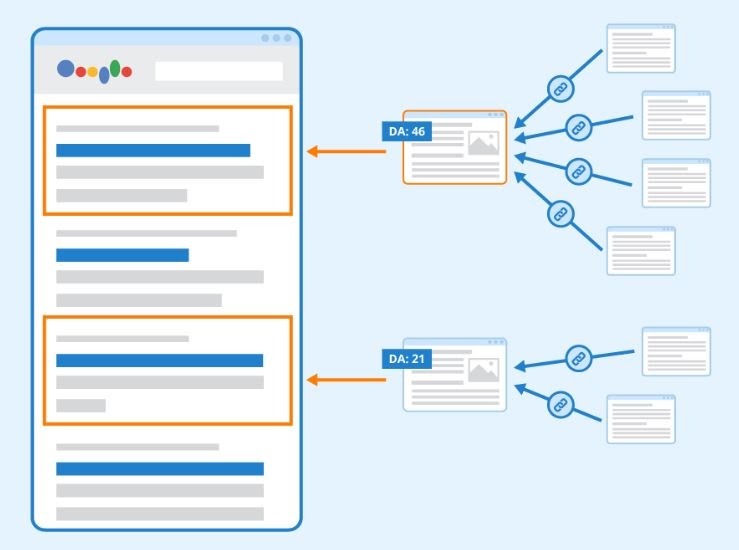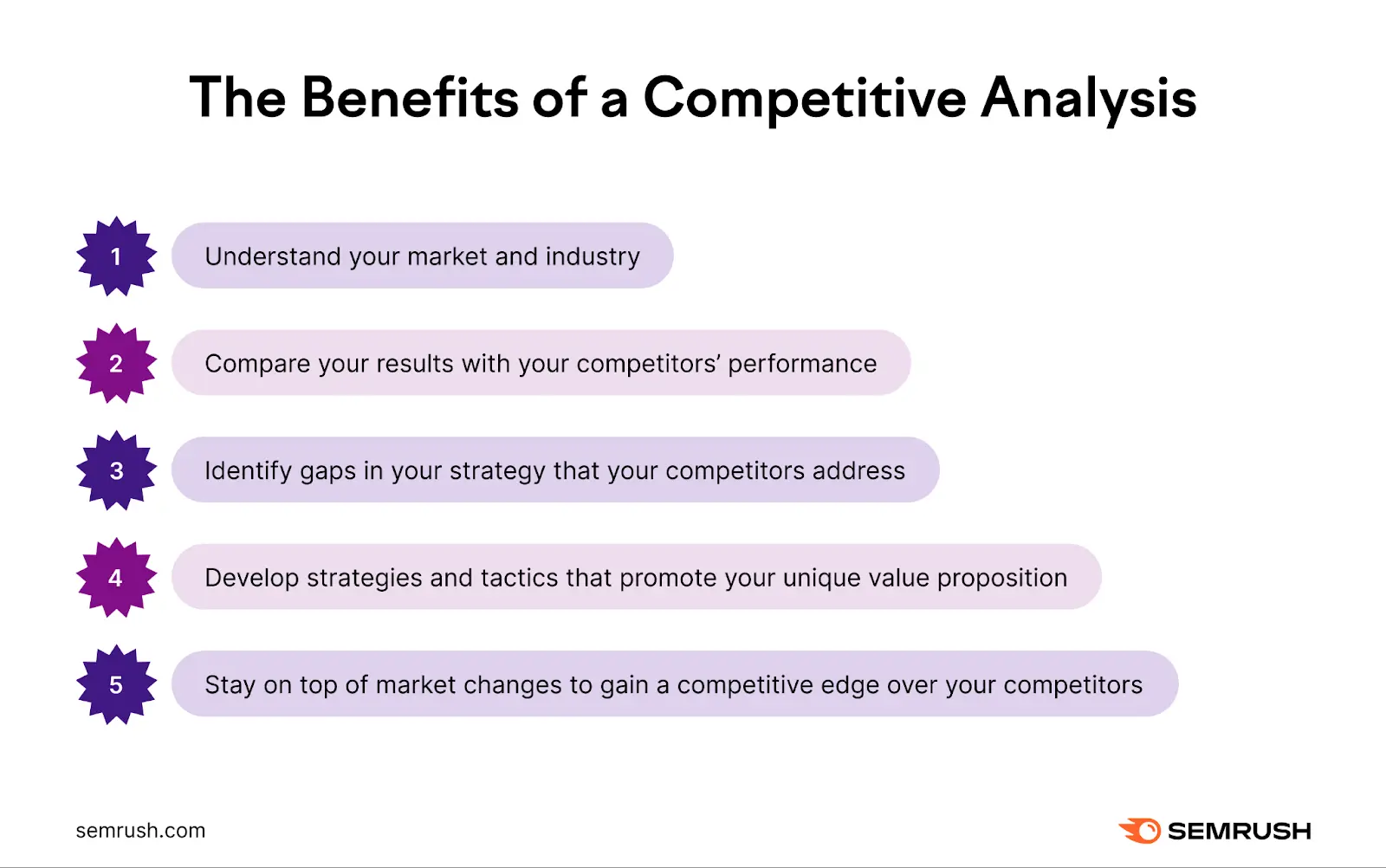Step 1: Identify Your Competitors
Direct Competitors
These are businesses that offer the same products or services as you, targeting a similar customer base. Direct competitors are your primary focus since their actions directly impact your market position.Indirect Competitors
These businesses offer products or services that fulfill the same customer needs but in a different way. While they may not be an immediate threat, monitoring their approach can provide insights into alternative market trends or customer preferences.Potential Competitors
Companies that are not yet in your space but could enter it are potential competitors. Keeping an eye on industry developments, new startups, or companies diversifying into your sector can help you stay ahead of future competition.Step 2: Search for Competitors
1. Use Search Engines
Start by using Google or other search engines to find businesses offering similar products or services. Keywords relevant to your industry, such as product names, market terms, or geographical locations, can help uncover competitors. Reviewing search results will give you an initial list of businesses competing in your space.2. Explore Social Media
Social media platforms like LinkedIn, Instagram, and Facebook provide a wealth of information about businesses. By searching relevant hashtags, keywords, or industry groups, you can find competitors and understand their social presence. Additionally, platforms like LinkedIn can offer insight into a company's personnel, partnerships, and even organizational growth trends.3. Use Industry Databases
Industry-specific databases, like Crunchbase, PitchBook, or Statista, can provide in-depth information about competitors, including financials, funding rounds, and expansion efforts. Subscription-based tools like Hoovers or Owler also offer detailed reports on competitors’ activities, including recent news, business expansion, and SWOT analysis.4. Attend Industry Events
Trade shows, webinars, and conferences are excellent ways to discover competitors. Attendees often showcase their new products, services, and innovations, providing an ideal opportunity for you to gather insights. You can also network with industry experts who might share valuable information about the competition.Step 3: Analyze Competitors' Strategies
Once you've identified your competitors, it's time to analyze their strategies. This will help you understand what makes them successful (or not) and how you can differentiate your offerings.1. Analyze Their Products and Services
Start by reviewing your competitors’ product offerings. Are they similar to yours in terms of features, quality, and pricing? What makes their products unique? Look for strengths and weaknesses. For example, a competitor might offer more features but at a higher price, or they might target a different demographic with slightly modified versions of the same product.2. Review Their Pricing Strategies
Pricing is a key aspect of any business strategy. Are your competitors pricing higher, lower, or at par with your offerings? How are they positioning their pricing—are they value-driven, premium, or discount-oriented? Understanding their pricing approach can help you either align your prices or find ways to offer more value to customers at a competitive rate.3. Evaluate Their Marketing Tactics
Look at how your competitors market themselves online and offline. This includes analyzing their social media campaigns, content marketing strategies, SEO efforts, and advertising campaigns. Tools like SEMrush, Ahrefs, or Moz can help you track their SEO strategies, keyword rankings, and backlink profiles, giving you insight into their digital presence.4. Study Their Customer Experience
A company’s success is often tied to its customer experience. Look at how your competitors engage with their customers—do they offer superior customer service, fast shipping, or flexible return policies? You can also look at online reviews, testimonials, and social media mentions to see what customers are saying about their experience with your competitors.5. Check Their Partnerships and Collaborations
Partnerships can be a significant strategic advantage. Investigate whether your competitors have alliances with other businesses, suppliers, or influencers. These partnerships might be helping them reach new audiences or offer complementary products and services, giving them an edge in the market.6. Observe Their Innovation and R&D
The ability to innovate often differentiates industry leaders from followers. Check if your competitors are investing in research and development or regularly launching new products and features. Innovation can be a key driver of market share growth, and understanding where your competitors stand can highlight where you may need to catch up or get ahead.7. Analyze Their Financial Performance
While financial data might not always be readily available, public companies are required to disclose their earnings. If your competitors are publicly traded, review their quarterly or annual reports to gain insight into their financial health. For private companies, tools like Crunchbase or similar can provide some financial estimates, helping you gauge their growth trajectory.Step 4: Build a Competitor Analysis Framework
To organize and keep track of the data you gather, it’s helpful to build a competitor analysis framework. This could include a competitor matrix, where you compare the key aspects of their business (products, pricing, marketing, etc.) against your own. By having this information in one place, you can identify areas where your company excels and where improvement is needed.Step 5: Adjust Your Strategy
Armed with the data from your competitor analysis, you can now refine your own strategy. Look for gaps in the market that your competitors are not addressing, and find ways to differentiate your products or services. Are there underserved customer needs you can target? Could you adjust your pricing, marketing, or customer service to gain an edge? Competitor analysis is not a one-time task—it should be an ongoing process as the market evolves.Conclusion
Competitor analysis is essential for staying competitive in any industry. By identifying who your competitors are and studying their strategies, you can gain valuable insights to refine your own approach, differentiate your offerings, and seize new opportunities. A thorough competitor analysis helps you stay agile and informed, ensuring your business remains competitive in an ever-changing market. Read more :1= https://checkwebsitedr.com/blogs/how-to-search-for-reliable-information-on-the-internet/
2= https://checkwebsitedr.com/blogs/how-to-search-for-secure-and-private-browsing-options/
3= https://checkwebsitedr.com/blogs/how-to-search-for-family-history-and-genealogy-records/
4= https://checkwebsitedr.com/blogs/how-to-search-for-competitors-and-analyze-their-strategies/
5= https://checkwebsitedr.com/blogs/how-to-search-for-job-openings-in-your-field-a-step-by-step-guide/
6= https://checkwebsitedr.com/blogs/how-to-search-for-healthy-recipes-that-fit-your-diet/
7= https://checkwebsitedr.com/blogs/how-to-search-for-and-apply-for-grants/
8= https://checkwebsitedr.com/blogs/how-to-search-for-the-right-keywords-for-your-blog/
9= https://checkwebsitedr.com/blogs/how-to-search-for-local-services-near-you/
10= https://checkwebsitedr.com/blogs/how-to-search-for-the-best-travel-deals-and-discounts/


